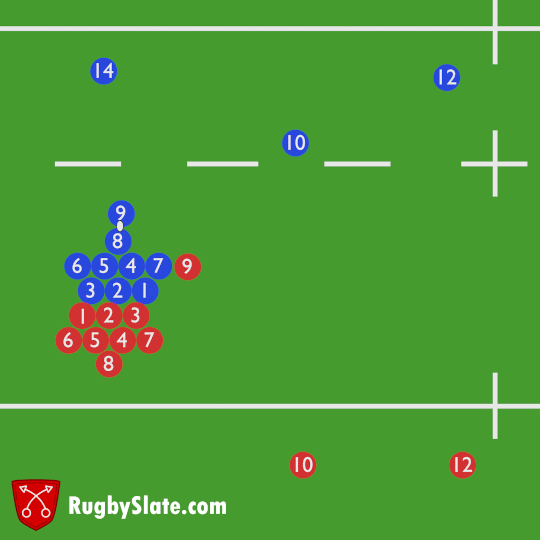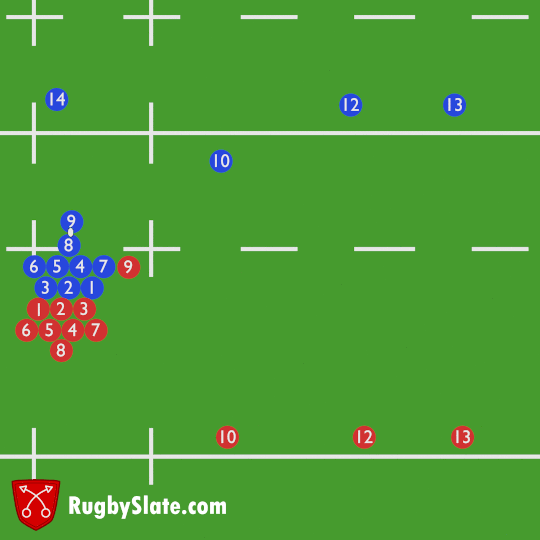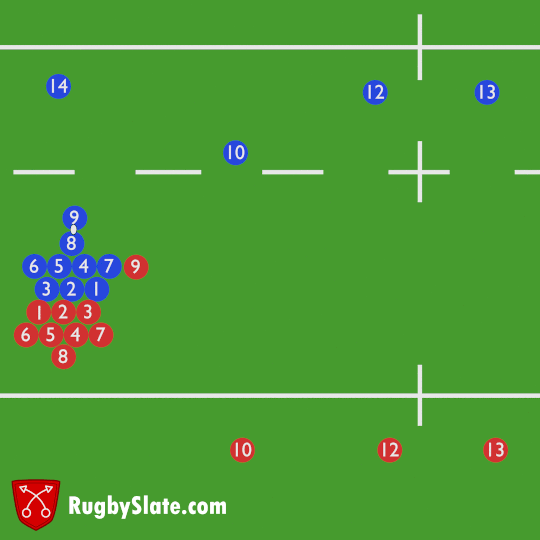Back Row Defending from a Scrum
A scrum gives the attacking team a big advantage by having 8 players of the opposition tied up in the scrum. This gives the attack 1 or 2 phases with more space than normal and a reduced defensive line. It is the job if the back row to quickly turn from scrummaging to being part of the defensive line. This back row defence needs to work from the scrum outwards, focusing on the close immediate threats. The first thing that the back row need to look out for is the number 8 picking from the scrum and attacking the fringes. Whichever side they attack, the flanker on that side should be the first to make the tackle and then supported quickly by the number 8. The number 8 typically will pick and run to the right at an attacking scrum as the scrum half will be on their left so the flanker on this side should be most wary of this. An example of how to defend an 8 pick is shown below.
If the ball does get passed out by the scrum half then the flankers and 8 should get out of the scrum quickly and into the defence. The first player to consider is the flanker on the side where the ball goes; this usually is the openside flanker but if there is a scrum centrally on the pitch the flankers will have to be flexible in what role they play defensively. The flanker must get out and the scrum and work to close the gap between the 10 and scrum. Good attacking sides will be able to exploit this gap with moves using the blindside winger and the 12 so the flanker must be able to close this gap quickly and tackle anything that comes through it. Next the number 8, who should work similarly to the flanker but operating inside on them, closer to the scrum. This pair should communicate to control the channel near the scrum, giving the attacking team no gaps to attack. Once the ball travels away from the close channel the back three should continue to work across the field so that they are able to support at any breakdowns.
The final player in the back 3 is the blindside flanker who typically won’t be very involved in the first phase tackle however their focus should be on getting outside of the next phase. This should roughly be the case for any of the back three however for the 6, this should always be their target. The first phase will likely be a tackle by a back, supported by the 7 and maybe the 8. The 6 should work to get around the breakdown and help in defence on the far side for the second phase.
By the 6 doing this, there is a secondary benefit of them acting almost as a sweeper across the defensive line. If any breaks do come through the line, the 6 will be behind the line running across in the best place to make a covering tackle. An example of this is shown below.




